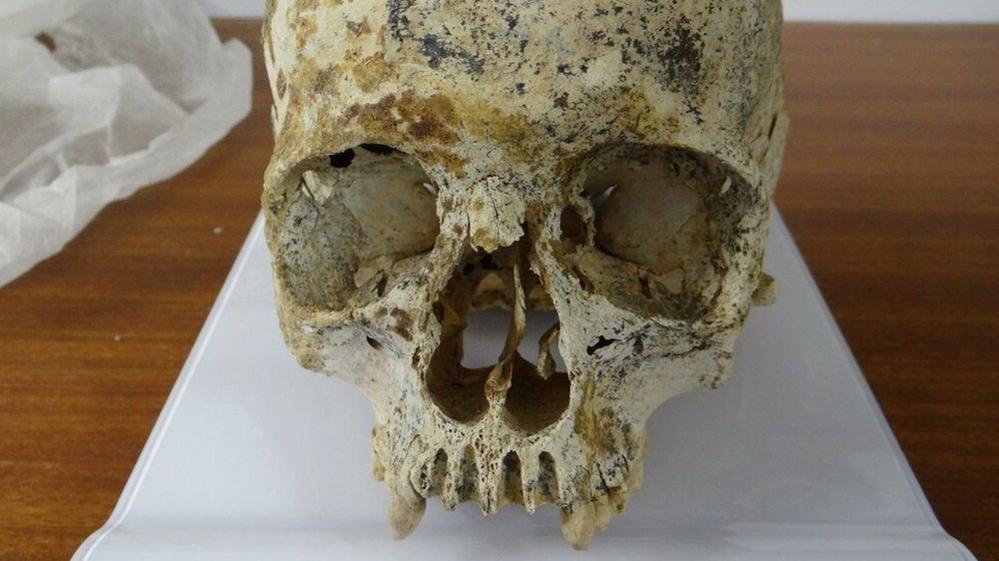Giving life to a woman found in a 4,250-year-old grave in Caithness
- Published
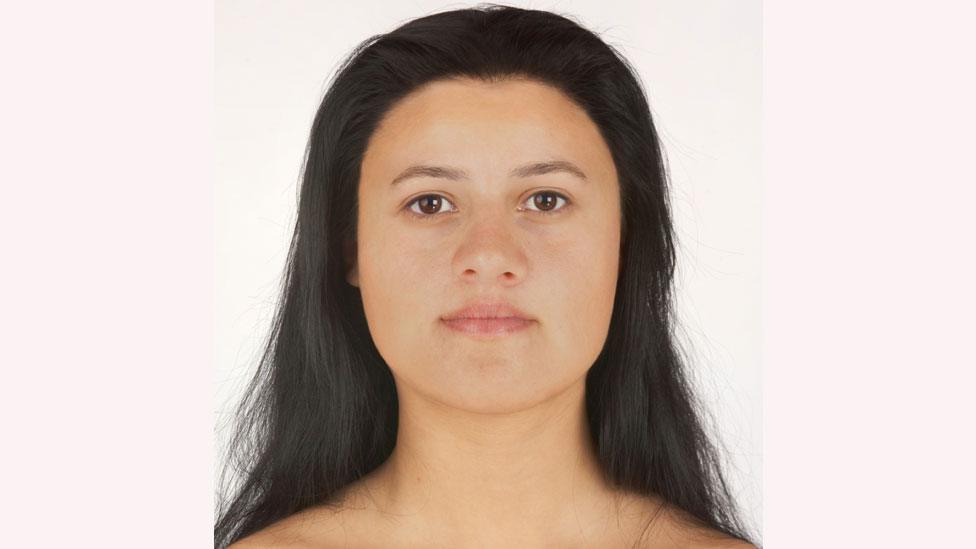
A facial reconstruction of an Early Bronze Age woman known to archaeologists as Ava
Researchers have gained new insights into the life of a woman who died more than 4,250 years ago.
Known as "Ava", her bones were found in a grave cut into solid bedrock at Achavanich in Caithness in 1987.
New ancient DNA research has shown that she was descended from European migrants who arrived in Britain a few generations before she was born.
The analysis also suggested that she likely had brown eyes and black hair, and that she was lactose intolerant.
The research, published in Proceedings of the Society of Antiquaries of Scotland, external and led by archaeologist Maya Hoole, has shed new light on previous ideas on Ava's appearance. She was found to be from an earlier date than previously thought.
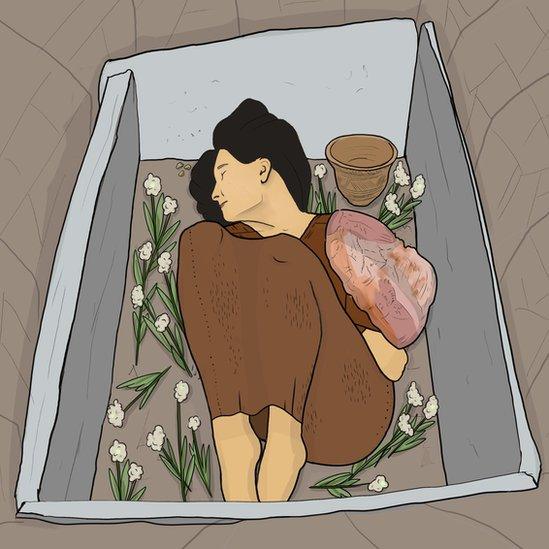
A reconstruction of the woman's burial in grave cut from solid rock
The new analysis of her genomic data has resulted in the making of a new facial reconstruction of Ava by a forensic artist, Hew Morrison.
The original reconstruction interpreted Ava with red hair and blue eyes.
Ms Hoole said the new ancient DNA evidence, gathered by experts at the Natural History Museum in London and Harvard Medical School, had revealed more accurately what Ava would have looked like.
She said: "Archaeologists rarely recover evidence that indicates hair, eye or skin colour but these new revolutionary techniques allow us to see prehistoric people like we never have before.
"The revelation that her ancestors were recent northern European migrants is exciting, especially as we know that she has no, or very few, genetic connections with the local Neolithic population who resided in Caithness before her."
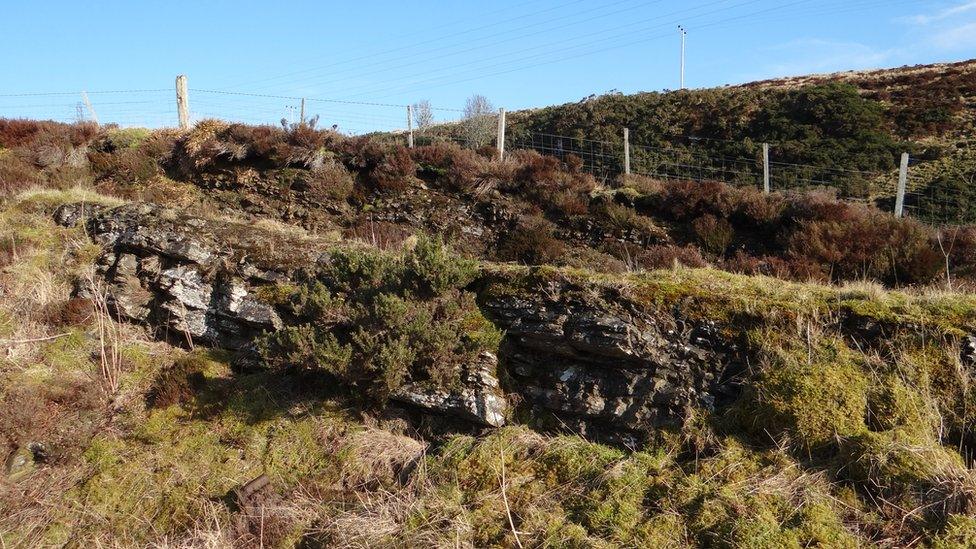
The location of where Ava was found buried
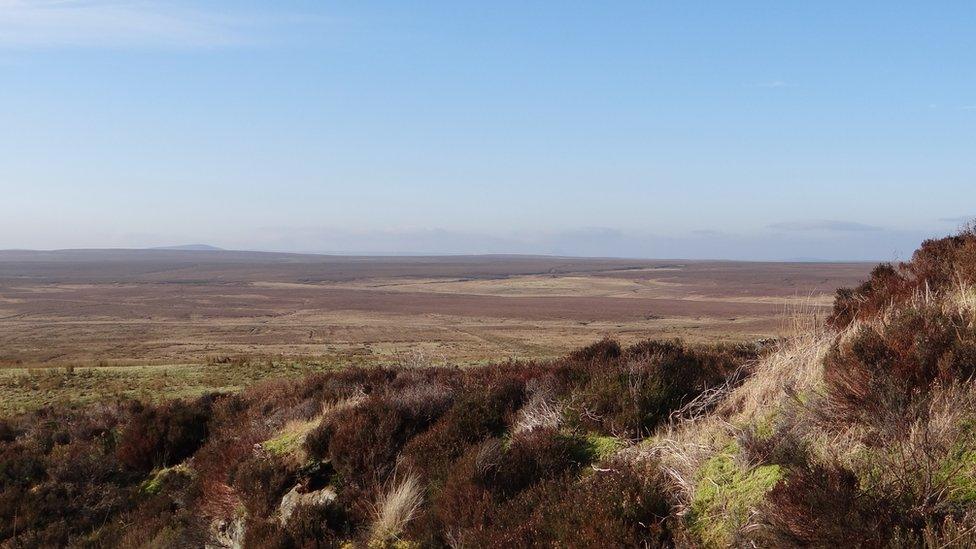
The view south from the burial site in Caithness
Ava, who was aged between 18 and 25 when she died, lived in an Early Bronze Age community in an area forested with hazel, pine, alder and birch trees.
The community farmed cattle, ate a meat rich diet, was likely using local flora for medicinal practices and were highly skilled at crafting tools and objects.
Ms Hoole said: "Ava was a healthy young woman who was likely involved in physical labour.
"We don't know what caused her death, but the way she was buried suggests that extra effort was put into the creation of her grave. She was either well respected, greatly cared about or both."
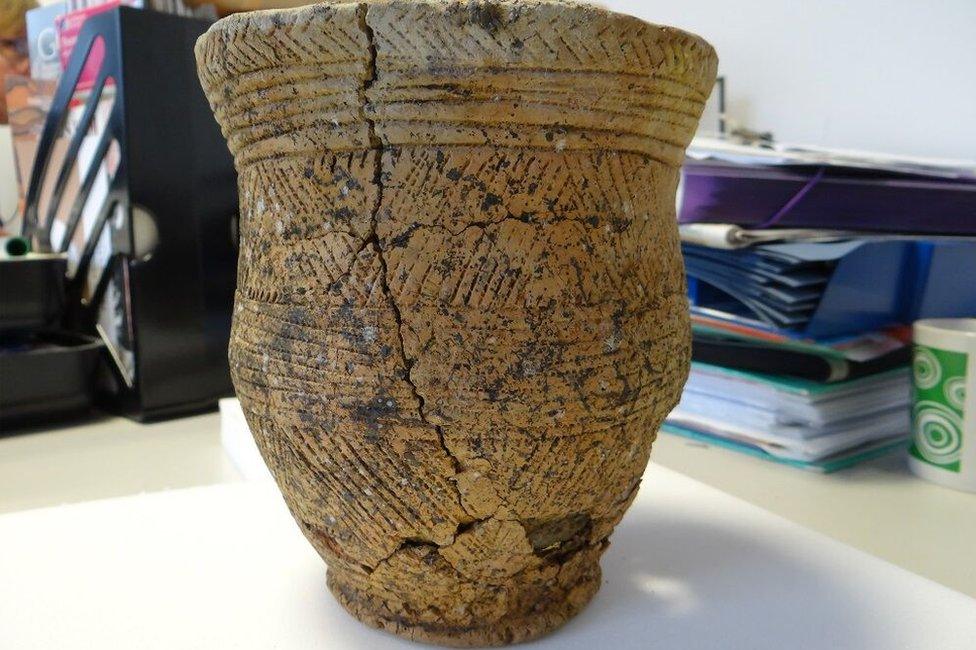
Ava was buried with a decorated beaker
The archaeologist added: "I never dreamed we would be able to do and learn so much from Ava."
Mr Morrison, a graduate of the University of Dundee, said great care was taken in creating the facial reconstruction.
He said: "As the skull was a very old and delicate artefact, the approach used to reconstruct Ava's face was the two-dimensional method.
"This is a less intrusive approach to the traditional three-dimensional method of when a plaster cast is made of a skull and the face is built up manually by hand."
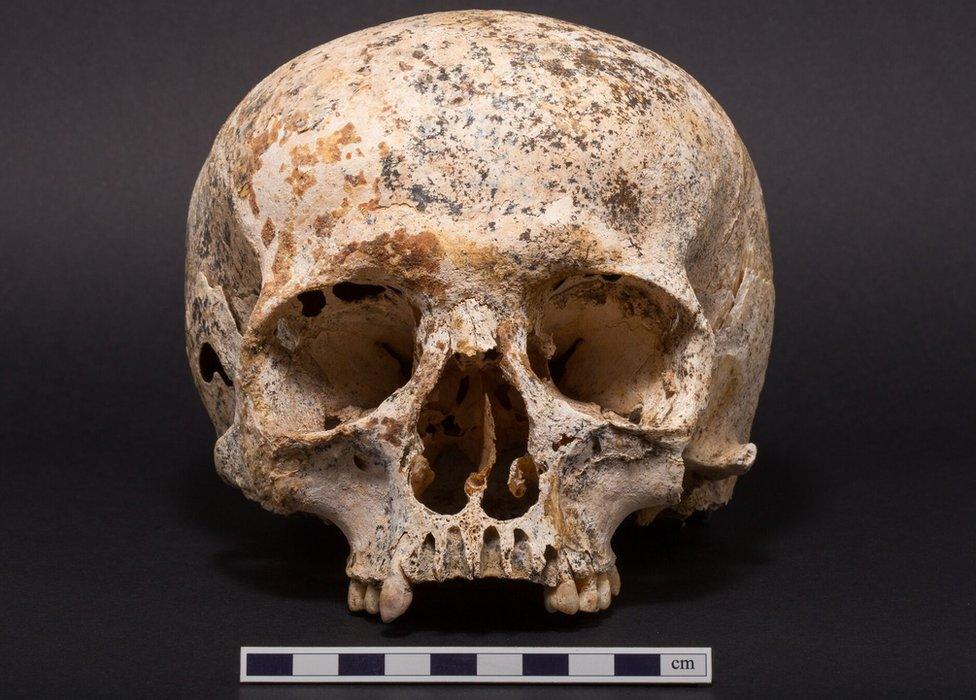
Ava's skull and other remains were found in 1987
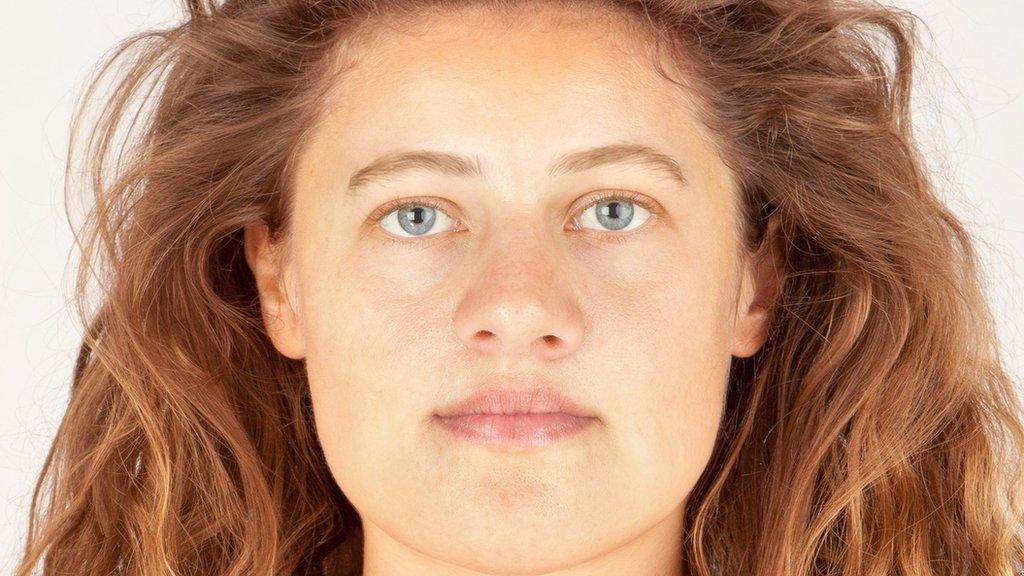
The original interpretation of Ava's face
The process the artist followed included photographing and taking measurements of Ava's skull and teeth, using information from a database of modern European tissue depths that correlated with Ava's age, sex and ancestry and drawing the shape of the woman's head and facial features.
Mr Morrison said: "When I received the results of the DNA testing from Maya, which showed that Ava had straight dark hair, brown eyes and a less-fair complexion, I was presented with the opportunity to revise the first facial reconstruction.
"Whilst the overall shape of Ava's face and facial features remained as they were previously, darkening her eyes, her skin tone and giving her totally new hair made her look very different to what I initially imagined when I received the DNA results."
He added: "I did not feel that she looked typical of what a person from Bronze Age Britain would have looked like, but perhaps that of a person from a more southern part of Europe."
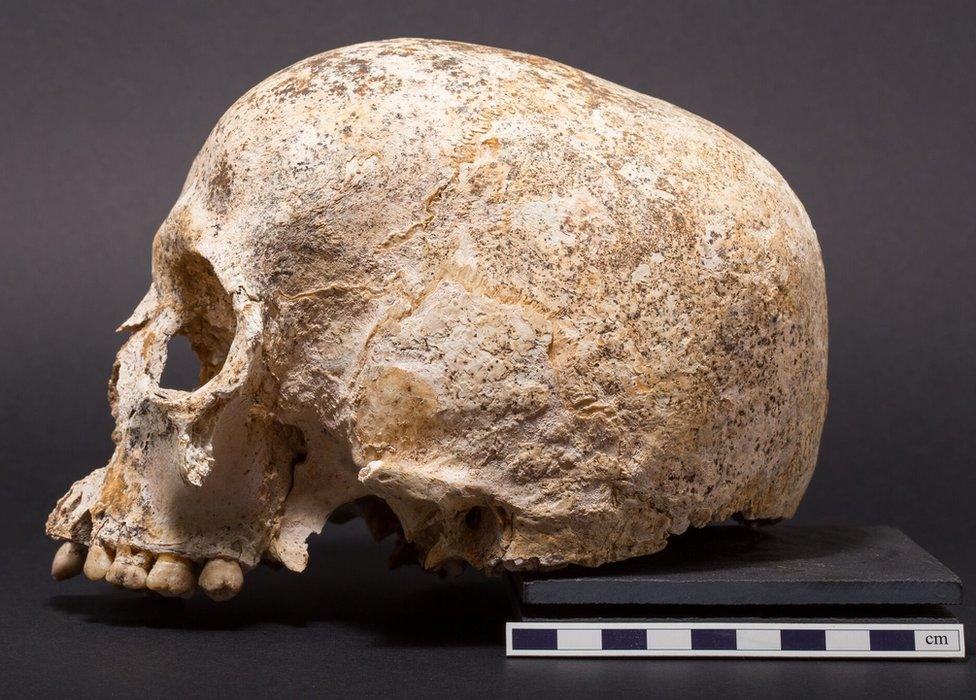
Photographs of Ava's skull were used in creating of a facial reconstruction
Ava's bones, including a skull and teeth, were discovered during a quarrying operation near what is now the A9 trunk road, between Latheron and Thurso.
She was buried in an unmarked rock-cut grave rather than underneath a cairn or in a grave dug into soil, which are the most commonly discovered burial sites from the Copper Age and Early Bronze Age.
A piece of pottery, known as a Beaker, was among a small number of items Ava was buried with.
Archaeologists studied the finds at the time and established that she was part of a European group known as the Beaker people, who spread across the European continent and into Britain in a massive migration event.
- Published7 March 2017
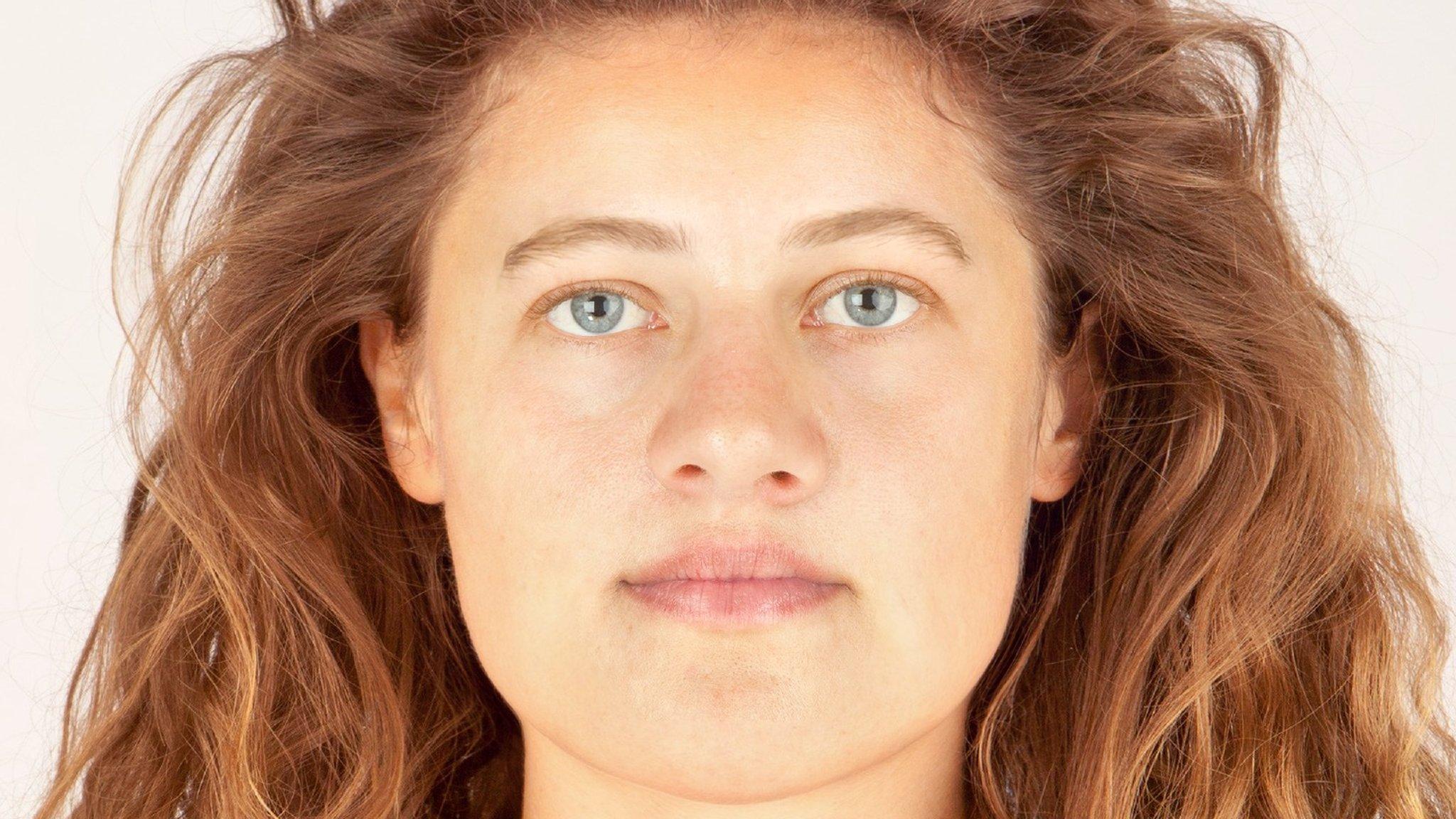
- Published29 July 2016

- Published12 February 2016
